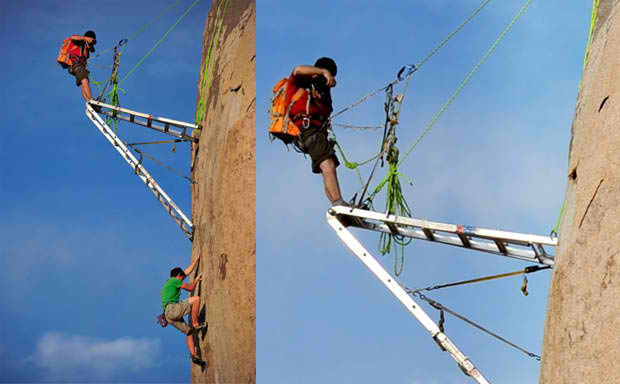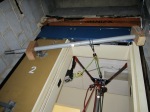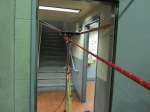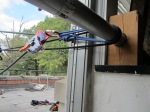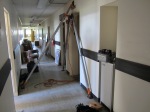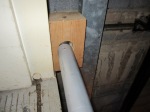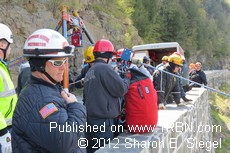A pig and a dog walk into … Sounds like the beginning of a bad joke doesn’t it? Really, it’s just the start of a bad day for two animal owners.
Some people like ham during the holidays, this pig in Colorado wanted no part of that family tradition and attempted to bury himself to get away from ending up on the family table. Thankfully, the local FD was on hand to make sure this giant hog didn’t stay in his makeshift hole for too long.
In all seriousness though, how would you have handled this incident had the pig not been able to assist in is own rescue. My initial thought would be to wrap a salvage cover and some large ratchet straps under his belly to make a sling, which could be rigged to a raising system. As for a high point… maybe a couple of ground ladders lashed together at the tip and a block and tackle attached? I’d love to hear your thoughts on it. Click on the “comment” button (above or below the post, depends on how you’re viewing it). Thanks to Statter911 for making us aware of this one.
In another animal related story, a dog fell down what is believed to be an airshaft for an abandoned mine. The shaft is roughly 150′ deep. The dog was uninjured in the fall and happy as heck to see his owner upon surfacing, naturally. The dogs owner also seems genuinely appreciative of the rope team’s work.
Make sure you click on the link ti the photo gallery to the left of the article. One of the pictures there shows the opening to the hole. It definitely looks like a pretty dangerous opening, with lots of debris ready to fall down the hole. A good high point looks like it would almost be mandatory, so your ropes wouldn’t be rubbing on the edge.



